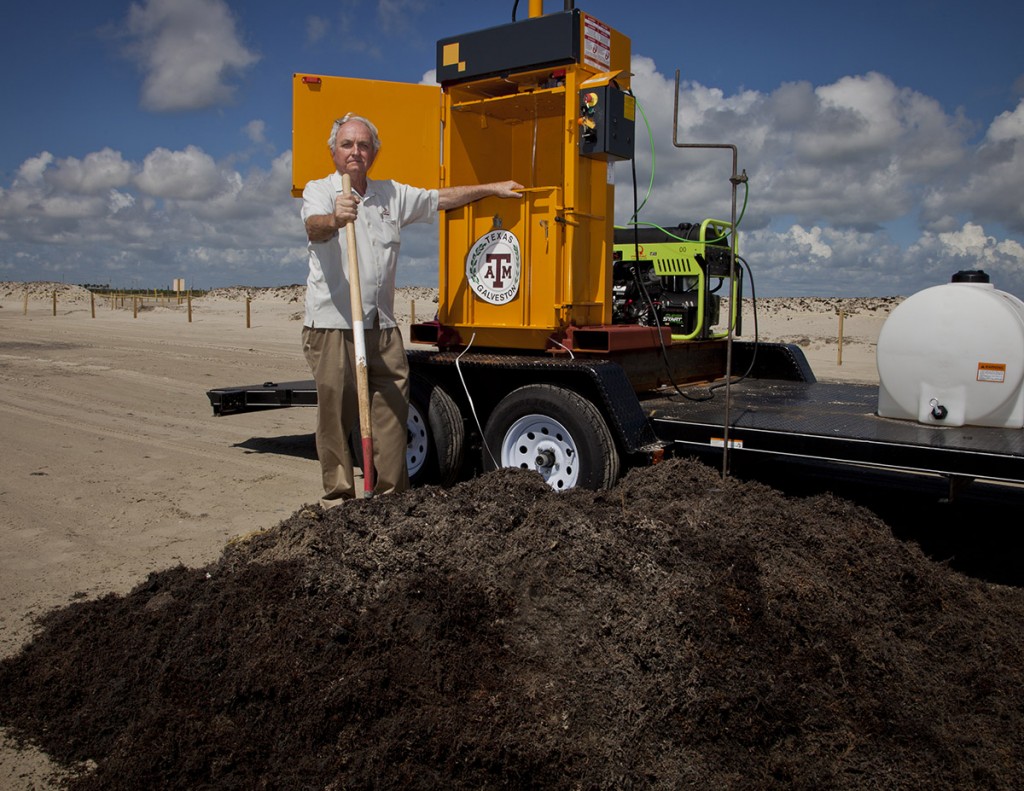What to do with tons of seaweed from Gulf of Mexico? Bale it, spread it and maybe eat it, researchers say
Researchers at Texas A&M University at Galveston have found a use for the hundreds of tons of stinky seaweed that have washed up on Texas and Louisiana beaches along the Gulf of Mexico. They have devised a way to bale the stuff like common hay and have even found a way to possibly make it edible.
Tom Linton and Robert Webster, researchers who have been studying the seaweed problem for years, have adapted a farm compactor to bale the seaweed, technically called sargassum, that floats atop the Gulf of Mexico waters in huge clumps that can be miles long. It can then be packed into blocks similar to how hay is bundled.
Once baled, the sargassum can be mixed with sand and, combined with existing beach vegetation, help stop beach erosion that has plagued the area for decades, the researchers say.
In addition, there is yet another twist to the seaweed problem: a way has been devised to take out iodine that is found in much of the sargassum and thereby possibly make it edible and, if so, perhaps opening up some additional opportunities for its use.
Linton, who has been working on seaweed projects for more than 10 years, says that sargassum “comes in waves and hits the beaches every few years. It’s a natural process that happens, but this year has been different.
“We’ve had at least nine strong cold fronts this spring and early summer that kept the sargassum out into the Gulf, but in recent months the currents have washed all of it up on the beaches. We now think we have developed ways to bale it up like hay, remove the iodine and possibly use it safely as a food source. In addition, it makes an ideal way to cover some beach areas with vegetation and makes a very nice ground cover.”
The Texas General Land Office and the Galveston Park Board of Trustees have awarded the researchers a $150,000 grant to support the seaweed baling project.
#TAMUresearch


